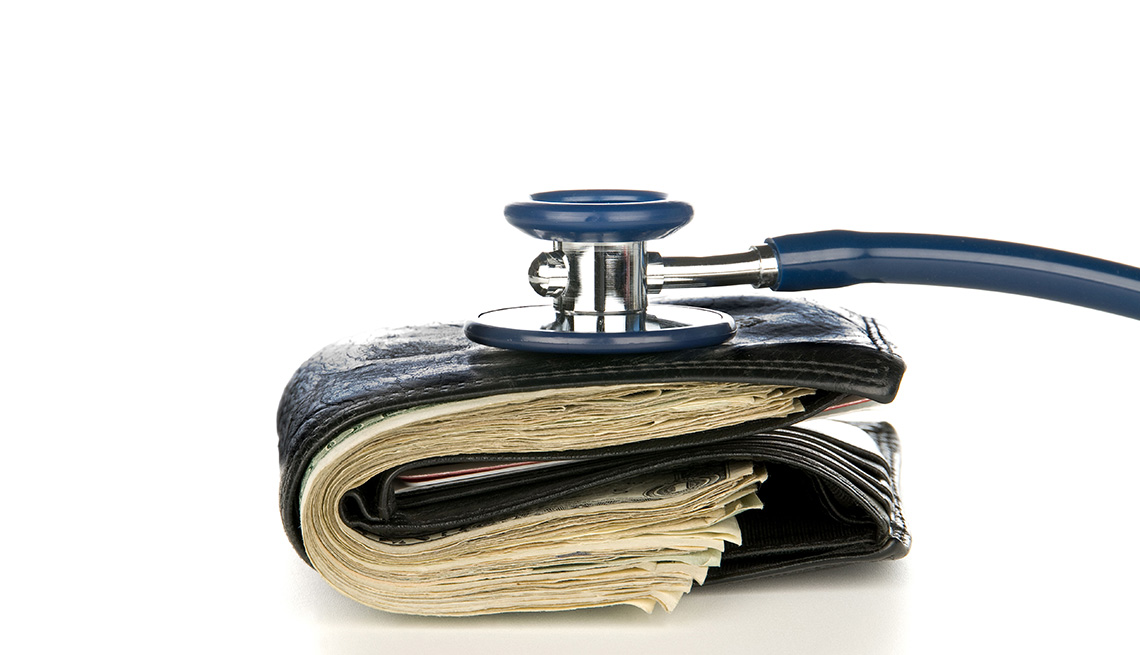AARP Hearing Center
It’s a familiar story: You need surgery, become ill or experience a medical emergency. You’re treated at a hospital in your health plan’s network. As you head home to continue your recovery, you take some measure of comfort: Insurance will take care of most of your bills.
But for you and many other patients, that comfort proves to be a mirage. Not long after returning home, you get a notice in the mail from an ambulance company, medical lab or specialist who took part in your treatment. They aren’t in your health plan's network, and you’re stuck paying part of their bill.
According to a March 2019 study by the Health Care Cost Institute that analyzed claims data from nearly 620,000 hospital admissions, about 1 in 7 patients using an in-network hospital was nevertheless billed by an out-of-network medical provider, a practice known as "balance billing." Anesthesiology, emergency treatment and lab services were among the most common causes of these unexpected bills.
More advice on avoiding, fighting and paying surprise medical bills
Why balance billing happens
Medical providers in your health plan’s network cannot collect more than the rate negotiated by your insurance company. A non-network provider can, and often will, charge its full price. Many plans will still pay some of that bill, based on what the insurer considers the customary fee for a procedure. The out-of-network doctor or facility might then bill you for the remaining balance.
The average “surprise amount” in such cases is roughly $1,500, according to Mark Hall, a professor of law and public health at the Wake Forest University School of Law who has written extensively on balance billing. But the amount you are balance billed can reach into the tens of thousands of dollars, says Karen Pollitz, a senior fellow at the Kaiser Family Foundation, which focuses on health care issues.
Balance bills are primarily an issue for people with private insurance. Government-run health care programs like Medicare do not have set networks of physicians and facilities; you can see any practitioner who provides Medicare-covered services, and the vast majority of those providers have agreed to accept Medicare’s rates for those services. (That’s if you rely on MedIcare Parts A and B, also known as original Medicare. If you also have a Medigap or Medicare Advantage plan provided by a private insurer, you may be subject to that plan's network limits.)
Balance bills are often associated with emergency treatment. If you are seriously injured or ill, a first responder or family member is likely to take you to the nearest ER or the one most suited to the medical situation, regardless of whether it is in your network. Even if the facility is in network, the doctors you see might not be — nearly two-thirds of ER physicians at U.S. hospitals are outsourced, according to a National Bureau of Economic Research report — and those out-of-network doctors might bill you at their own rates.
This can also happen in nonemergency situations. You can choose treatment at an in-network hospital but still be billed by an out-of-network provider who works there, even one you haven’t seen. “You may never meet these doctors,” Pollitz says. “They may just look at your slides or films.” Your blood work might be sent to an out-of-network lab, or you could be referred to a clinic or practice affiliated with the hospital and charged a “facility fee.”
Other causes of surprise bills
How surprised you are by the size of a medical bill may be a function of how well you understand the cost-sharing terms of your insurance policy, such as the deductible, copays and coinsurance.
Here are some other reasons you might receive a shock bill:
Out-of-pocket costs. How surprised you are by the size of a medical bill may be a function of how well you understand the cost-sharing terms of your insurance policy, such as the deductible, copays and coinsurance. Experts estimate that one-fourth of Americans who carry health insurance are actually underinsured because of coverage gaps and out-of-pocket expenses, according to a 2019 Commonwealth Fund report.




































































